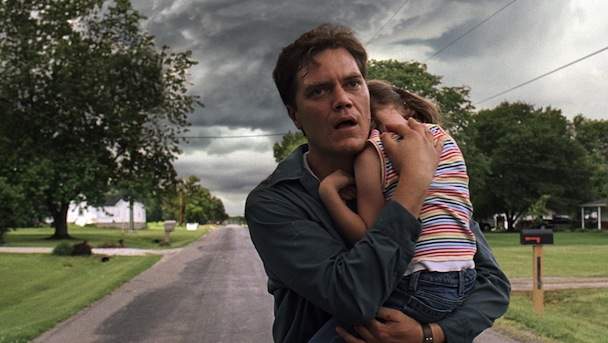Take Shelter
Prophesy or mental illness? This thoughtful slow-burner will make you question what you think you know.
Overview
Some subjects are just perfect for the medium of cinema. A world where dreams bleed into reality, where reality seems like a dream, where a window is cracked open to reveal an alternate existence pushing up against ours — the world of mental illness — is one of them.
Jeff Nichols' Take Shelter is set in the American Midwest, in a small town where men sit in bars, women sit in sewing circles, pastures are mottled green and skies are threatening. Lowly sand miner Curtis LaForche (Michael Shannon — you know, the awesome, faintly bug-eyed shapeshifter you loved in Boardwalk Empire and Runaway) dreams of a massive storm with motor-oil rain, and he wakes up shaken.
As the nightmares return night after night, they get more vivid, more violent and more reluctant to release him from their grasp — they cause him real injury, and their motifs creep into reality as hallucinations. He is gripped by fear on two conflicting fronts: he fears the apocalyptic storm he believes to be coming, from which he begins building an elaborate tornado shelter; and he fears he is mirroring his mother's decent into paranoid schizophrenia, which began when she, too, was in her thirties. Meanwhile, his observant and strong-willed wife, Samantha (Jessica Chastain), tries to keep him present in reality.
If this sounds intense and slow burning, well, it is. It's also exquisitely, unostentatiously made, getting under your skin to make you feel jumpy, much like Curtis is. You're never really sure which eerie, pastoral scene is dream or reality until it's already gone way off-kilter.
Take Shelter is out to make us rethink what we know about mental illness. It poses the question of whether Curtis is a patient or a prophet, and it opens the door to the latter prospect more than you might expect. It also builds to an unforgettable ending that may cause some controversy in the car on the way home.





